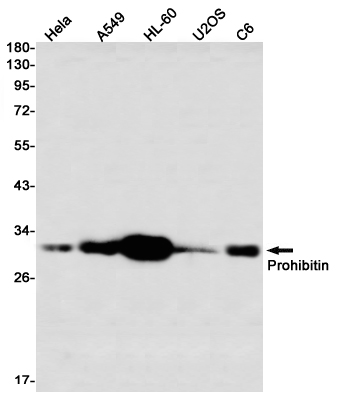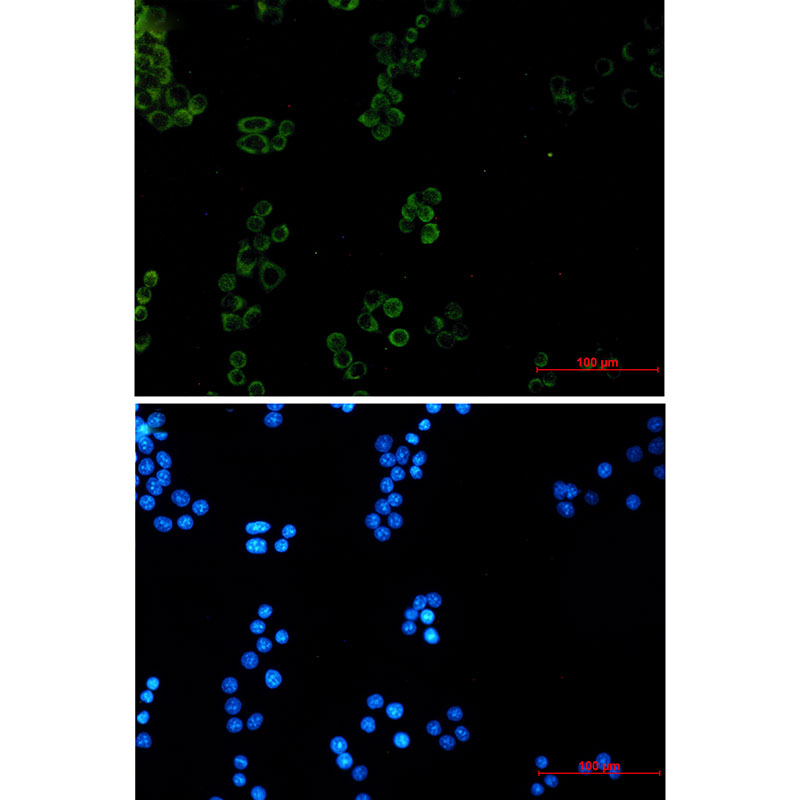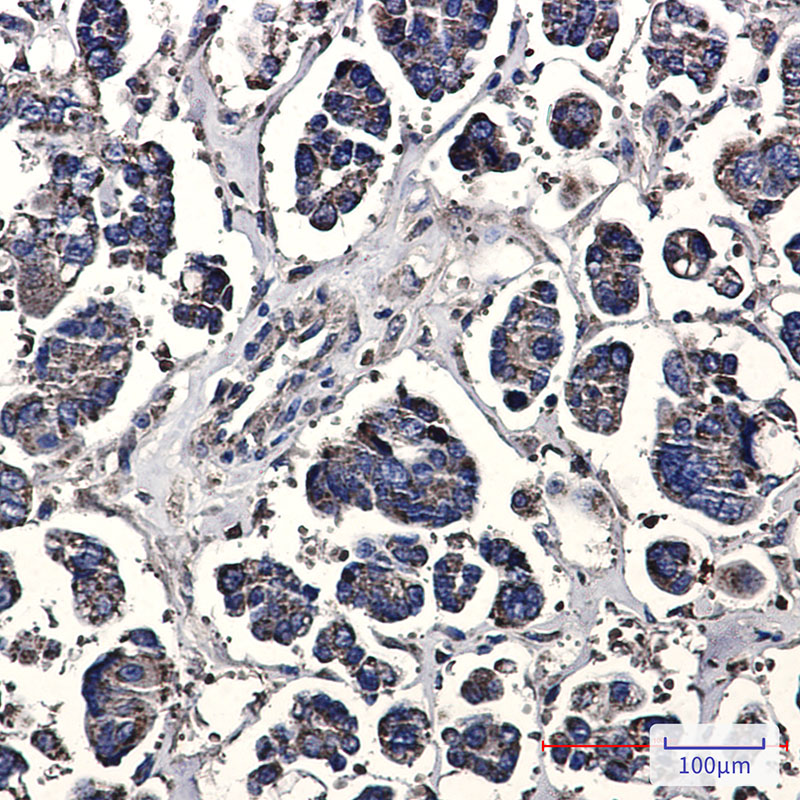


| WB | 1/500-1/1000 | Human,Mouse,Rat |
| IF | 1/20 | Human,Mouse,Rat |
| IHC | 1/50-1/100 | Human,Mouse,Rat |
| ICC | 1/50-1/200 | Human,Mouse,Rat |
| FCM | 咨询技术 | Human,Mouse,Rat |
| Elisa | 咨询技术 | Human,Mouse,Rat |
| Aliases | PHB1; HEL-215; HEL-S-54e |
| Entrez GeneID | 5245 |
| WB Predicted band size | Calculated MW: 30 kDa; Observed MW: 30 kDa |
| Host/Isotype | Rabbit IgG |
| Antibody Type | Primary antibody |
| Storage | Store at 4°C short term. Aliquot and store at -20°C long term. Avoid freeze/thaw cycles. |
| Species Reactivity | Human,Rat |
| Immunogen | A synthetic peptide of human Prohibitin |
| Formulation | Purified antibody in TBS with 0.05% sodium azide,0.05%BSA and 50% glycerol. |
+ +
以下是关于Prohibitin抗体的3篇代表性文献(已简化格式):
1. **文献名称**:Prohibitin, a potential tumor suppressor, interacts with RB and regulates E2F function
**作者**:Wang S, et al.
**摘要**:研究发现Prohibitin通过结合视网膜母细胞瘤蛋白(RB)调控E2F转录因子活性,提示其肿瘤抑制功能。研究使用特异性抗体验证了PHB在细胞核内的蛋白互作机制。
2. **文献名称**:Prohibitin induces mitochondrial fusion and promotes cristae morphogenesis
**作者**:Merkwirth C, et al.
**摘要**:利用PHB抗体进行亚细胞定位分析,发现Prohibitin在线粒体内膜中通过调控膜融合蛋白OPA1维持线粒体嵴结构,影响能量代谢稳态。
3. **文献名称**:Prohibitin ligands in cell death and cancer: molecular mechanisms and therapeutic implications
**作者**:Thompson WE, et al.
**摘要**:综述了Prohibitin作为药物靶点的功能,重点讨论了其抗体在癌症治疗中的应用潜力,包括靶向PHB的抗体偶联药物开发进展。
(注:以上文献信息为基于公开研究的概括性描述,实际引用时需核对原文)
Prohibitin (PHB) is a highly conserved, ubiquitously expressed protein belonging to the stomatin/prohibitin/flotillin/HflK/C (SPFH) domain family. Initially identified as an anti-proliferative protein in mammalian cells, PHB exists as two homologous isoforms, PHB1 (≈32 kDa) and PHB2 (≈37 kDa), which form a heterodimeric complex localized primarily in the mitochondrial inner membrane. Beyond its structural role in maintaining mitochondrial integrity and chaperoning respiratory chain complexes, PHB regulates diverse cellular processes, including cell cycle progression, apoptosis, transcriptional regulation, and stress responses.
PHB antibodies are essential tools for investigating its dual roles in health and disease. In cancer research, PHB exhibits context-dependent functions, acting as a tumor suppressor in some malignancies (e.g., breast, ovarian) while promoting survival in others (e.g., liver, gastric). These antibodies are widely used in techniques like Western blotting, immunohistochemistry, and immunofluorescence to assess PHB expression patterns, subcellular localization, and interactions.
Emerging studies link PHB dysregulation to metabolic disorders, neurodegenerative diseases, and aging. For example, mitochondrial PHB depletion correlates with impaired oxidative phosphorylation and insulin resistance. Commercially available PHB antibodies are typically raised against conserved epitopes, enabling cross-reactivity in human, mouse, and rat models. However, validation remains critical due to PHB's post-translational modifications and tissue-specific isoforms. Ongoing research explores PHB-targeted therapies, underscoring the antibody's importance in mechanistic and translational studies.
×